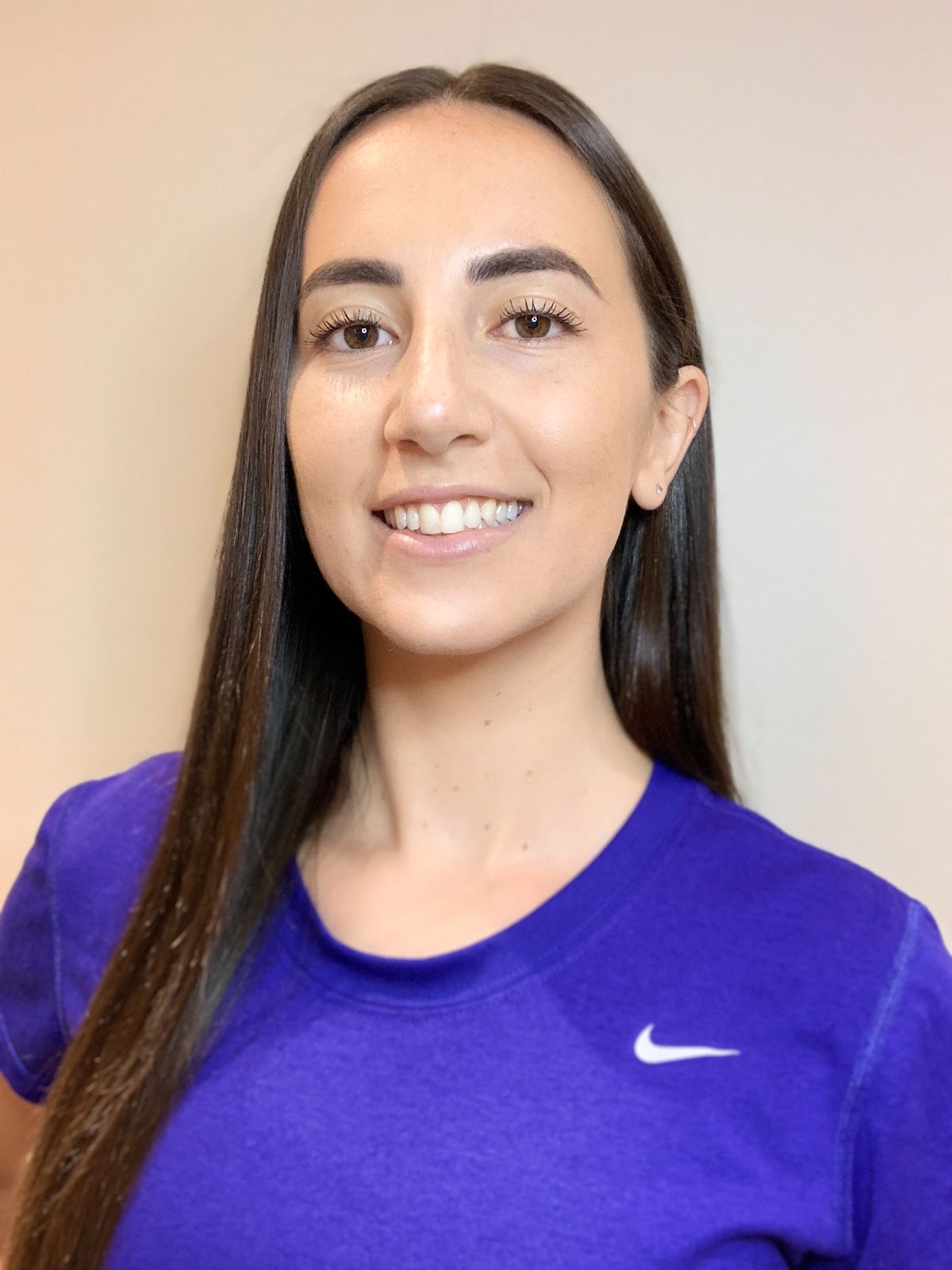How to ACTUALLY Motivate Your Clients

Guest blog post written by Michelle Falzone, a Registered Kinesiologist at the Cleveland Clinic in Toronto. Michelle also runs her own online health and fitness coaching business dedicated to building stronger and more confident women, in and out of the gym.
Believe it or not, we are always motivated. These are the drivers that get us to put our feet on the floor and hop out of bed every morning. These are the drivers for why we choose to have certain people in our life, why we eat what we eat and what we do for work.
However, as healthcare professionals, we may be noticing that our clients simply may not be motivated the way we need them to be motivated when it comes to their health.
This article will explore the ‘non-sciency’ theory behind how motivation works, as well as provide tangible and practical tips to put it into practice. When we use these tips, we enable better support for our clients while they develop health-promoting habits.
Find their fire
I’d like to kick things off by using my favourite camping analogy to help us better understand the connections between motivation and lifestyle change. When we start a campfire, we need a flame. Picture the flame as motivation. To keep the fire going, we need firewood to burn. Consider the wood to be the daily habits we build.
As you can see, both are essential, yet we cannot rely on having this ideal situation all the time. Most importantly, when it comes to building sustainable healthy habits, it is important to have the wood (our daily habits), as this is what is going to sustain the fire (our motivation).
I say this because motivation is a feeling - and it can be a VERY fleeting one to say the least! As this feeling comes and goes, we can imagine how unreliable this resource can be to help our clients build healthy sustainable lifestyles. We want to encourage the adoption and development of automatic habits because motivation can disappear and reappear unpredictably!
So how do we go about supporting our clients as they stockpile their firewood?
To start, we recognize that we are all driven by what we find value in. If we value the taste and quality of a Starbucks drink, we will be more than happy to pay premium pricing.
If we value the time we spend doing activities with our kids and/or partner, we may see the value of online grocery shopping or appreciate the convenience of dining out/ordering in more often than cooking at home for example.
We can help our clients understand their values by asking better questions such as:
- What is important to you?
- What do you appreciate most in life?
- What about your health do you value most?
- Why are these values important to you?
After we understand the “why” behind our clients’ motivation, then we can help them see how being healthier and living well brings value to their life. When this is crystal clear, and we can help them paint a picture of what would be different in their life, we begin to move the needle of change.
This is why, when we feel unmotivated to do things, it can be encouraging to tell ourselves why it’s important for us to follow through on something - perhaps even if there is a compromise. When we understand what our actions are rooted in (our deepest fiery desires) and how they impact the bigger picture, this stockpiles our firewood and keeps us going.
The psychological need for change
In a nutshell, to motivate our clients is to get them to be active participants in their own health. In order for our clients to satisfy their three psychological needs for autonomy, relatedness and competence, we consider the self-determination theory.
Autonomy is the ability to feel in control of one's behavior and destiny, and involves being able to make our own decisions. We experience these heightened feelings of independence when we are able to make our own choices and follow through with our actions, as well as when other people acknowledge our feelings.
This is why telling clients what to do rarely works. It’s up to us to respect their independence and provide an environment where our clients feel heard.
Relatedness is the ability to feel connected to other people and have a sense of belonging to a social group. When our clients are respected and cared for, this level of support allows for their ability to change and grow.
In addition to support from their social circle, having a healthcare professional on our clients’ care teams can be extremely effective.
Competence is one’s ability to do something successfully. When we have the knowledge, skills and abilities to execute on a task or interact effectively within our environment, we feel a sense of mastery.
As healthcare professionals, we see the importance of ensuring the demands of a health goal are optimally matched to our clients’ skills and capacity. Positive feedback can then be shared as they move on to their next health goal.
It is through these three psychological needs that a healthcare professional has the ability to help their clients reprogram their way of thinking, doing and being.
So when we understand our clients’ big ‘why’, provide a space where their autonomy is preserved and they feel connected to us, we can now work our ‘magic’ and build their competence.
Building self-belief
The intention of increasing client competency is to guide our clients to a place where they feel very confident in their next small steps. When confidence and self-belief is high, it increases the odds of successfully implementing new behaviours.
We encourage our clients to break down their larger health goal into bite-sized pieces, helping them take the next small step that excites them. So let’s say they want to get more active so that they can play with their kids or grandkids, we can ask, “What is something you can do in the next week to get one step closer to that goal?”
After they share their potential next step, using a confidence ruler can save our clients A LOT of both time and experimenting to assess the likelihood of this small step being successful. We can ask, “How confident do you feel in making this happen this week on a scale of 1 to 10… with 1 being not very confident to 10 being very confident?”
If the answer is less than 7, chances are the goal may not be reachable at this time. If this is so, we can ask, “What would increase your confidence?” or “What would make this goal more manageable for you?”
If the answer is greater than 7, we can ask our clients, “That’s a great number! What do you feel is making you confident?” Chances are they will say that the goal is manageable and doesn’t make them want to disappear to a dark, hidden place!
In either case, the goal is to get our clients to use their strengths and helpful qualities to perform a task. An excellent follow up question can be, “Are there any resources, tools and/or support you need to increase your odds of success?” This question captures autonomy, relatedness and increases competency as we leverage resources that can support them further.
When our clients complete small steps with success, this cultivates belief in themselves and makes them feel competent. And, over time, these steps add up to something great! We recognize that it is in the laying of one brick at a time that builds a house. We can help our clients become their own brick layer for their ‘house’ of optimal health.
One of my favourite books is Motivational Interviewing in Health Care by Rollnick et al. This book has the potential to transform us and the care we give, ultimately helping our clients to transform their lives.
I encourage you to learn more about motivational interviewing to help co-create empowered clients who are active participants in their own health.

Michelle has her Bachelor of Arts in Kinesiology and Health Science from York University in Toronto, Ontario, where she concurrently completed the Fitness Assessment and Exercise Counselling Certificate. After a few years in the field, her interest in behavioural psychology grew, and she completed the Wellness Coaching Post-Graduate Certificate program at Humber College in Toronto, Ontario. As a Registered Kinesiologist, Michelle works in the Movement & Performance department at Cleveland Clinic in downtown Toronto. She also runs her own online health and fitness coaching business dedicated to building stronger and more confident women, in and out of the gym. In her spare time, Michelle enjoys woodworking, hiking and exploring new cuisines.
You can reach Michelle via email at [email protected] or on Instagram at @pivotyourwellness.
References:
Lopez-Garrido, G. (2021, January 4). Self-determination theory and motivation. Self-Determination Theory | Simply Psychology.
Retrieved March 20, 2022, from https://www.simplypsychology.org/self-determination-theory.html
Rollnick, S., Miller, W. R., & Butler, C. (2022). Motivational interviewing in health care: Helping patients change behavior. The Guilford Press.
Become a Guest Blogger!
We are now accepting applications for new Guest Bloggers! We encourage our fellow bloggers or aspiring bloggers to share their knowledge with the First Line Education community! If interested, please click the link below.


